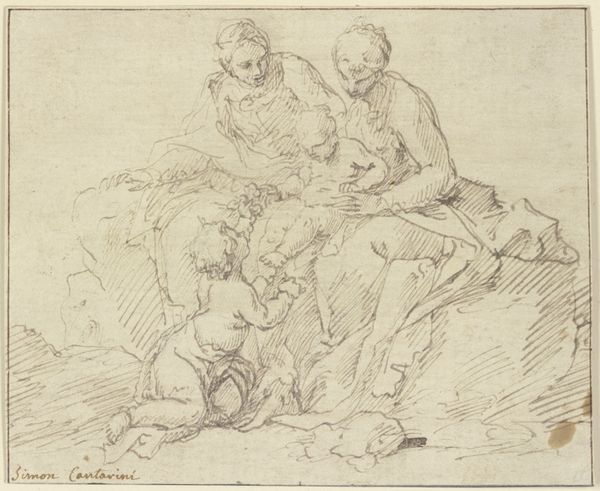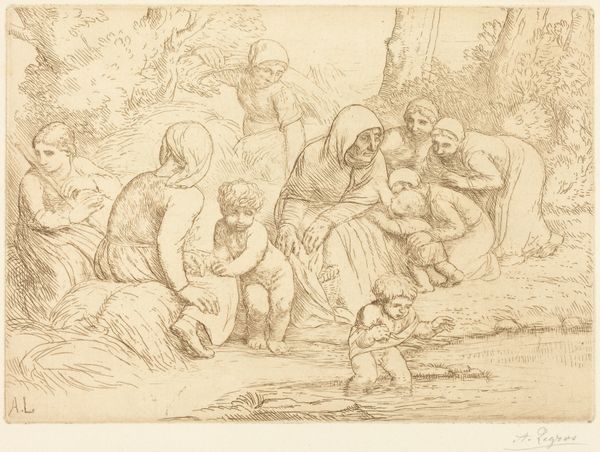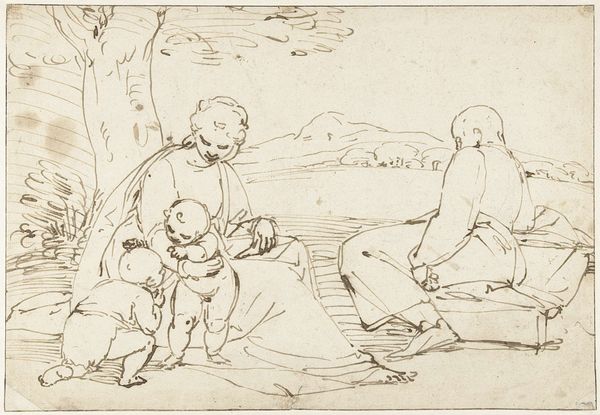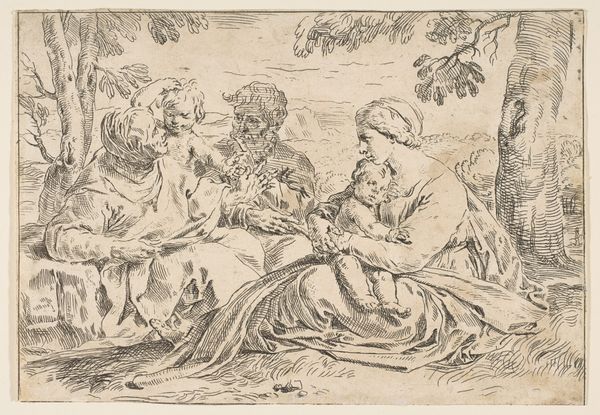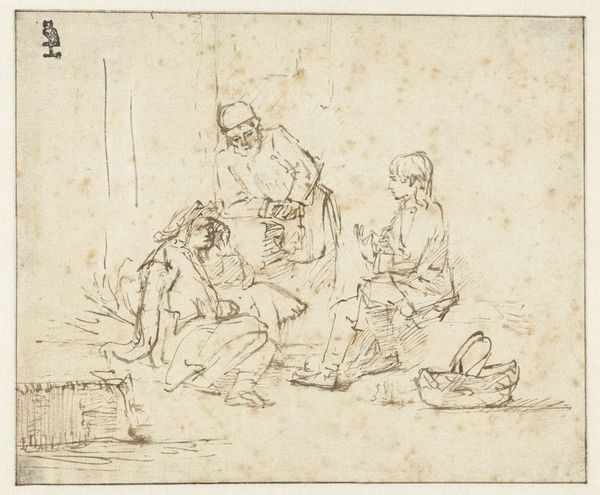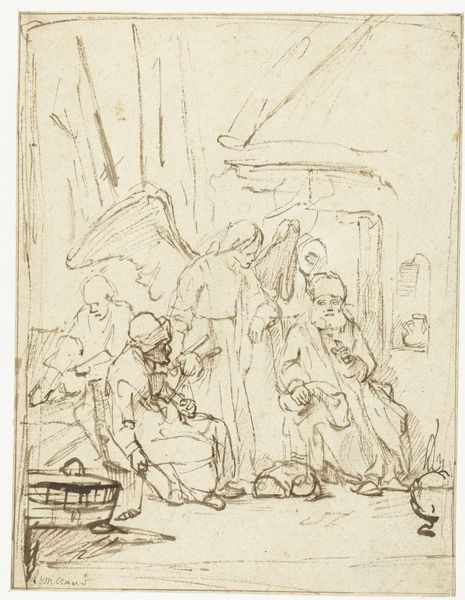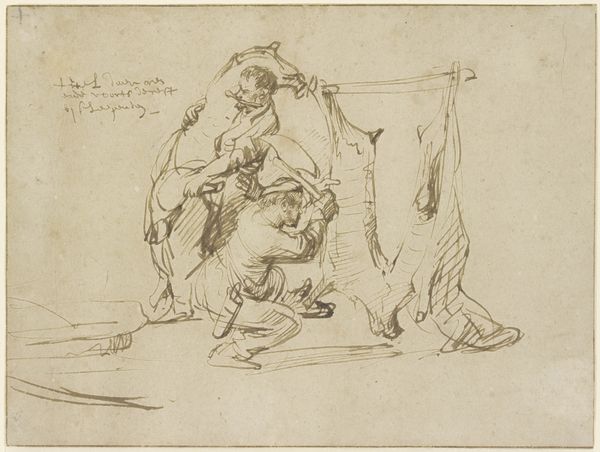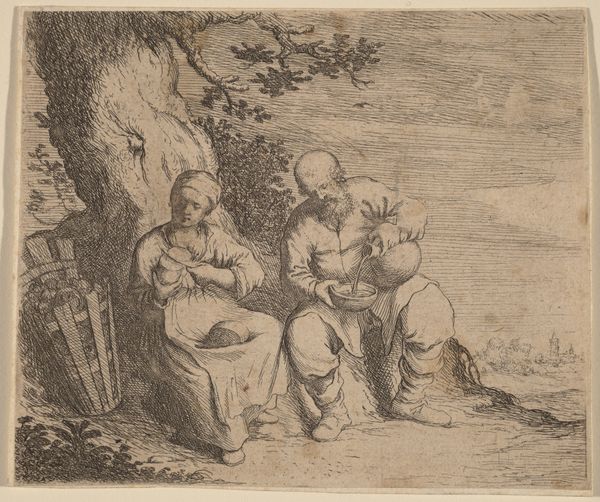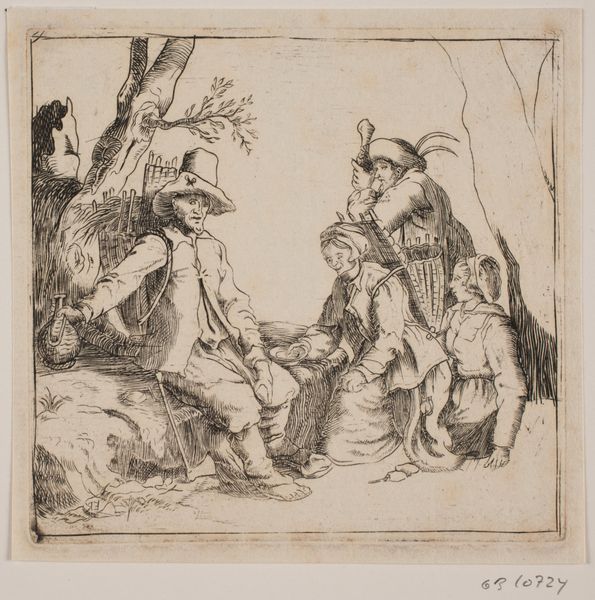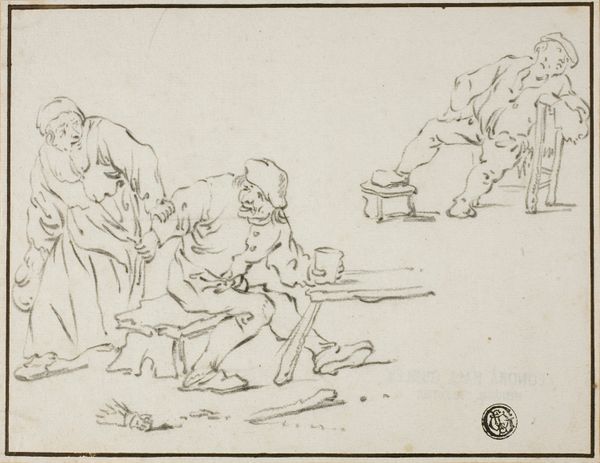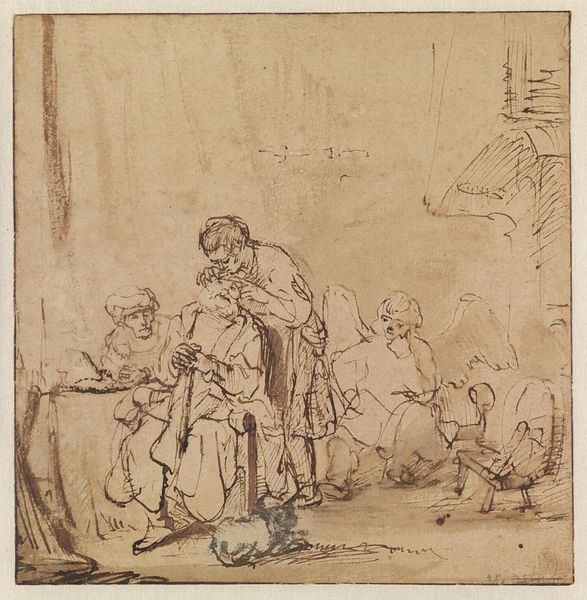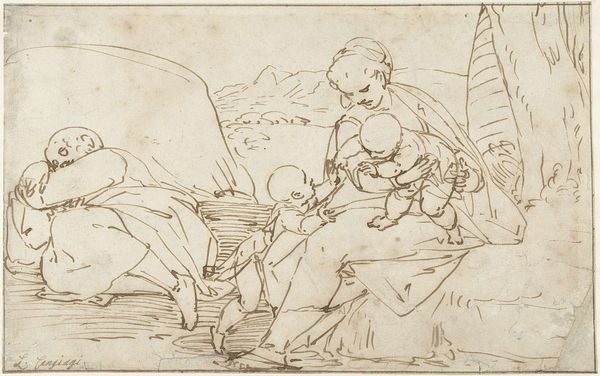
drawing, paper, ink
#
drawing
#
mannerism
#
figuration
#
paper
#
ink
#
history-painting
#
italian-renaissance
Dimensions: overall (approximate): 26.6 x 41.8 cm (10 1/2 x 16 7/16 in.)
Copyright: National Gallery of Art: CC0 1.0
Editor: This is Luca Cambiaso's "Holy Family with Infant Saint John," made around 1562, using ink on paper. There's an almost dreamlike quality to it, like a memory half-formed. How do you interpret this work? Curator: It's interesting you say "dreamlike". Cambiaso, working in the Mannerist style, was playing with artistic conventions. Consider how the 'Holy Family' was usually portrayed - idealized, almost regal. Cambiaso’s image subverts that expectation, presenting them in what appears to be an intimate moment. The rough ink strokes feel immediate, less polished. It’s a deliberate shift in the public presentation of religious figures, humanizing them. What do you think that choice accomplishes? Editor: I guess it makes them more relatable, less distant. But does that choice have a larger significance? Was Cambiaso trying to say something about the Church? Curator: Potentially. This was a period of religious upheaval; the Reformation was in full swing. Art became a battleground for ideas. Showing the Holy Family in a more humble light could be seen as a challenge to the Church’s hierarchical authority, bringing religious figures closer to the everyday experience of the faithful. The institutional control over imagery was being renegotiated, and Cambiaso's art participated in that. Editor: So, the informality wasn't just an artistic choice; it was also a social statement. Curator: Precisely. Art is rarely created in a vacuum. The institutions commissioning, displaying, and interpreting the work influence its meaning. In this case, even Cambiaso’s style can be interpreted as a form of visual rhetoric that questions established norms. Editor: That's really interesting. I always looked at art through a purely aesthetic lens, but it's fascinating to see how deeply intertwined it is with social and political currents. Curator: Understanding the historical context allows us to decode the multiple layers of meaning embedded in the work. Art isn't just about beauty, it’s about power, belief, and the ongoing negotiation of values within society.
Comments
No comments
Be the first to comment and join the conversation on the ultimate creative platform.
